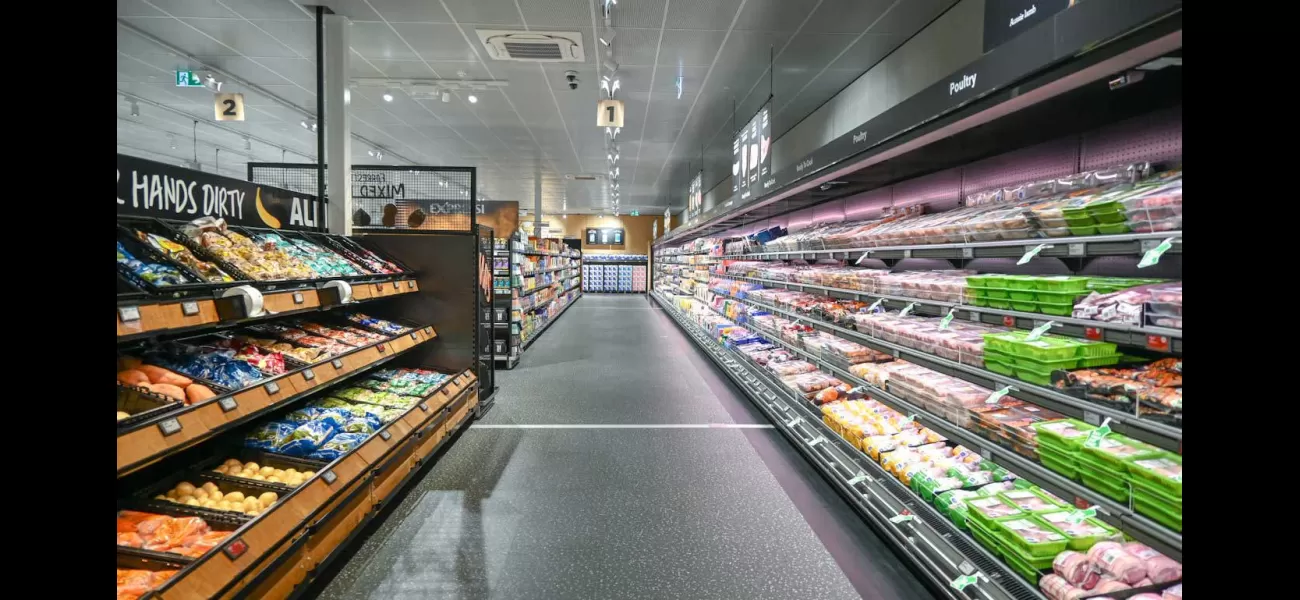Supermarkets feeling cold? There might be a surprising explanation.
The 'arctic aisle effect' may be affecting your grocery budget.
July 31st 2024.

If you've been experiencing the chill of this week's winter weather, a trip to the grocery store may not provide much relief. Surprisingly, the temperatures inside Australian supermarkets can be just as cold as the frigid conditions outside. In fact, one Aldi store in Sydney recorded a temperature of only 13.1 degrees this week in their meat aisle. This phenomenon is known as the "arctic aisle effect," where the cold air from open refrigerators creates a chilly breeze that customers can feel throughout the store. It's no wonder shoppers are often seen clutching their winter coats while perusing the aisles.
Despite the discomfort, experts believe that supermarket chains have been slow to address this issue for a reason. According to Jana Bowden, a professor of marketing and consumer psychology, supermarkets traditionally relied on fan technology to circulate the cold air and maintain a consistent temperature. However, this method was not always effective, resulting in aisle temperatures as low as 7-10 degrees. Bowden suggests that these frigid temperatures may actually benefit supermarkets by influencing customers' food choices. Research has shown that colder temperatures can lead to more emotionally-driven decisions, ultimately resulting in increased spending.
On the other hand, Professor Nitika Garg from the University of NSW Business School has found that cold weather can also impact people's preference for unhealthy foods. This could explain why some supermarket chains may be keeping their store temperatures low, albeit unintentionally. Garg's research shows that during cold or rainy weather, people tend to gravitate towards comfort foods like chocolate. Women seem to be more susceptible to these emotional effects, which could have negative repercussions for their family's health if they are the primary shoppers.
But while frigid temperatures may influence spending, there is a limit to how low supermarket temperatures can go. Bowden warns that if customers feel too cold, they may be deterred from spending time in the store and may even leave without purchasing anything. This could explain why some supermarkets have started to make changes to increase energy efficiency and reduce emissions. Both Aldi and Coles have trialled adding doors to their refrigerated sections, while Woolworths has implemented doors in all new and renovated stores.
In a recent temperature test conducted by 9news.com.au, Aldi's Thornleigh store recorded the coldest temperatures in the meat and dairy aisles, measuring at 13.1 degrees. This could be attributed to the store's small footprint and open air meat and dairy section. In comparison, the recently remodelled Coles store in North Sydney recorded a more consistent temperature of 17.1 degrees, thanks to the addition of doors in almost all refrigerated sections. Woolworths in Thornleigh fell in the middle range, with temperatures of 14.5 degrees in the meat and dairy aisles and 16.6 degrees in the grocery aisles.
While these changes may seem small, they can have a significant impact on reducing energy consumption and waste. Both Coles and Woolworths have pledged to switch to 100 percent renewable energy by 2025, following in the footsteps of Aldi. As customers become more environmentally conscious, it's important for supermarkets to prioritize energy efficiency and sustainability. So next time you step into a supermarket and feel a chill, remember that it's not just the winter weather – it could also be the "arctic aisle effect" at play.
Despite the discomfort, experts believe that supermarket chains have been slow to address this issue for a reason. According to Jana Bowden, a professor of marketing and consumer psychology, supermarkets traditionally relied on fan technology to circulate the cold air and maintain a consistent temperature. However, this method was not always effective, resulting in aisle temperatures as low as 7-10 degrees. Bowden suggests that these frigid temperatures may actually benefit supermarkets by influencing customers' food choices. Research has shown that colder temperatures can lead to more emotionally-driven decisions, ultimately resulting in increased spending.
On the other hand, Professor Nitika Garg from the University of NSW Business School has found that cold weather can also impact people's preference for unhealthy foods. This could explain why some supermarket chains may be keeping their store temperatures low, albeit unintentionally. Garg's research shows that during cold or rainy weather, people tend to gravitate towards comfort foods like chocolate. Women seem to be more susceptible to these emotional effects, which could have negative repercussions for their family's health if they are the primary shoppers.
But while frigid temperatures may influence spending, there is a limit to how low supermarket temperatures can go. Bowden warns that if customers feel too cold, they may be deterred from spending time in the store and may even leave without purchasing anything. This could explain why some supermarkets have started to make changes to increase energy efficiency and reduce emissions. Both Aldi and Coles have trialled adding doors to their refrigerated sections, while Woolworths has implemented doors in all new and renovated stores.
In a recent temperature test conducted by 9news.com.au, Aldi's Thornleigh store recorded the coldest temperatures in the meat and dairy aisles, measuring at 13.1 degrees. This could be attributed to the store's small footprint and open air meat and dairy section. In comparison, the recently remodelled Coles store in North Sydney recorded a more consistent temperature of 17.1 degrees, thanks to the addition of doors in almost all refrigerated sections. Woolworths in Thornleigh fell in the middle range, with temperatures of 14.5 degrees in the meat and dairy aisles and 16.6 degrees in the grocery aisles.
While these changes may seem small, they can have a significant impact on reducing energy consumption and waste. Both Coles and Woolworths have pledged to switch to 100 percent renewable energy by 2025, following in the footsteps of Aldi. As customers become more environmentally conscious, it's important for supermarkets to prioritize energy efficiency and sustainability. So next time you step into a supermarket and feel a chill, remember that it's not just the winter weather – it could also be the "arctic aisle effect" at play.
[This article has been trending online recently and has been generated with AI. Your feed is customized.]
[Generative AI is experimental.]
0
0
Submit Comment





